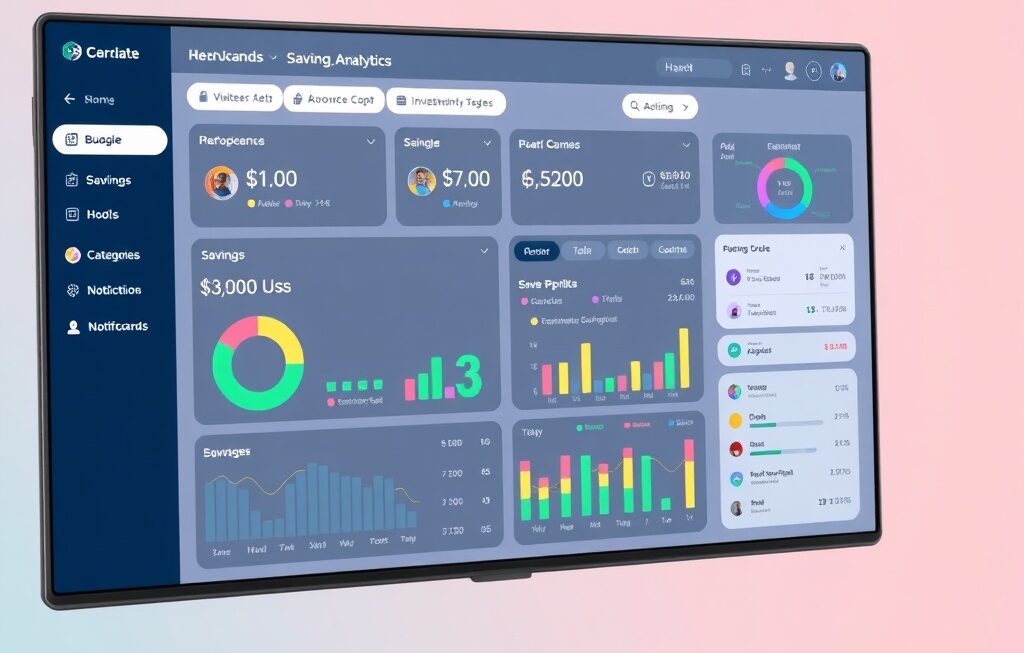In 2025, rising interest rates have become one of the most significant financial challenges facing households around the world. As global economies strive to stabilize after years of inflation and market volatility, central banks have responded by increasing interest rates to control prices and slow down borrowing. While these measures aim to protect long-term economic stability, their effects are deeply felt in personal budgets, savings, and investments. Understanding the relationship between rising interest rates and personal finance is essential to making informed decisions in today’s evolving economic landscape.
For individuals and families, higher interest rates can mean more expensive loans, higher credit card payments, and reduced purchasing power. However, they also present new opportunities for savers and investors who understand how to adapt their strategies. In this article, we will explore the real impact of rising interest rates on personal finances, explain how to protect your wealth, and share actionable tips to help you thrive in a high-rate environment.
What Are Interest Rates and Why Do They Rise?
Interest rates represent the cost of borrowing money. When you take out a loan, credit card, or mortgage, you pay interest on the borrowed amount. Conversely, when you deposit money into a savings account or fixed-income investment, you earn interest. Central banks, such as the Federal Reserve in the United States or the European Central Bank, set benchmark interest rates that influence all other lending and borrowing rates across the economy.
Rates tend to rise when inflation is high or when economic growth exceeds sustainable levels. By making borrowing more expensive, central banks aim to slow consumer spending and business investment, helping to balance supply and demand. In 2025, rising interest rates reflect efforts to combat lingering inflation and stabilize global markets after a period of economic turbulence.
How Rising Interest Rates Affect Personal Finance
Interest rates impact nearly every aspect of individual financial life. From housing costs and credit cards to investments and savings, understanding how they shape your finances allows you to make strategic adjustments.
Mortgage and Housing Costs
One of the most immediate effects of rising interest rates is seen in the housing market. Higher mortgage rates make buying a home more expensive, reducing affordability for first-time buyers. For example, a small increase of 1% in interest rates can add hundreds of dollars to a monthly mortgage payment. As a result, many potential homeowners may delay purchasing or opt for smaller properties.
Those with variable-rate mortgages face even more pressure, as their monthly payments can increase automatically with rate hikes. In this environment, refinancing to a fixed-rate mortgage or negotiating better loan terms can protect borrowers from future increases.
However, there is a silver lining. As borrowing costs rise, housing demand often cools, leading to slower home price growth or even price declines. This can eventually balance the market, creating opportunities for buyers once rates stabilize.
Credit Card and Loan Debt
Rising interest rates directly affect credit cards and personal loans. Most credit cards have variable rates tied to central bank benchmarks, meaning that as rates rise, the cost of carrying a balance increases. What used to be manageable debt can quickly become a financial burden.
For example, a credit card with a 15% annual interest rate might rise to 19% or higher, significantly increasing the total repayment amount. To manage this, individuals should prioritize paying down high-interest debt as soon as possible. Consolidating debt into lower-interest personal loans or using balance transfer cards with promotional rates can also help reduce costs.
Auto Loans and Student Loans
Borrowing for major purchases such as cars or education becomes more expensive during high-rate periods. Lenders raise rates on new auto and student loans, increasing the long-term cost of financing. While these rate hikes are unavoidable, improving credit scores, shopping for competitive lenders, and making larger down payments can help minimize overall borrowing costs.
In some cases, delaying non-essential borrowing until rates stabilize may be the best strategy to avoid overpaying.
Savings Accounts and Fixed-Income Investments
Not all effects of rising interest rates are negative. For savers, this environment can be highly beneficial. Banks and financial institutions typically increase returns on savings accounts, certificates of deposit (CDs), and money market funds when rates rise. This means your savings can finally grow faster than in the low-rate years of the past decade.
Fixed-income investments, such as government or corporate bonds, also become more attractive as yields increase. However, it’s essential to understand that the market value of existing bonds may fall temporarily as new ones are issued with higher yields. Long-term investors can benefit by reinvesting in higher-yielding instruments once older bonds mature.
Stock Market and Investments
The stock market tends to react negatively to rising interest rates in the short term. When borrowing becomes more expensive, businesses may delay expansion plans or reduce spending, which can lower profits and share prices. Additionally, investors often move their money from volatile stocks to safer, interest-bearing assets like bonds.
Still, higher rates do not necessarily spell doom for the stock market. Certain sectors, such as banking, insurance, and energy, often perform well during periods of rising rates. Savvy investors can adjust their portfolios by increasing exposure to these sectors while reducing positions in highly leveraged or speculative industries.
Real Estate Investments
Real estate, traditionally seen as a hedge against inflation, can behave differently depending on interest rate levels. Rising rates typically cool property demand, leading to slower price growth or even short-term declines. However, investors focused on rental income can benefit from higher rents if property ownership becomes more expensive for others.
In 2025, real estate investors should focus on high-demand areas with strong rental markets, as these are more resilient to interest rate fluctuations.
Retirement Planning
Rising interest rates also have important implications for retirement planning. For retirees or those nearing retirement, higher rates can be advantageous since fixed-income investments offer better yields, providing more stable income streams. However, younger investors should be cautious about how rate hikes affect long-term growth in their portfolios.
Balancing investments between stocks, bonds, and alternative assets can help preserve both growth potential and income stability.
Inflation and Purchasing Power
One of the reasons central banks raise interest rates is to control inflation. However, there’s usually a delay before the benefits reach consumers. In the short term, people may face higher borrowing costs without seeing immediate reductions in prices. This can put pressure on household budgets, especially for essentials like food, housing, and transportation.
To maintain purchasing power, individuals should focus on cost control, smart budgeting, and diversifying income sources. Automating savings and cutting unnecessary expenses can also provide relief during uncertain times.
How to Protect Yourself from Rising Interest Rates
While the idea of rising interest rates may seem daunting, there are many strategies to mitigate their effects and even take advantage of them. Here are some practical steps to strengthen your financial position in 2025:
- Lock in fixed rates: If you have variable-rate loans or credit cards, consider refinancing or switching to fixed-rate options to prevent future payment increases.
- Reduce high-interest debt: Prioritize paying off expensive debt to minimize exposure to rising costs.
- Increase savings: Take advantage of higher interest rates by boosting your emergency fund and using high-yield savings accounts.
- Diversify investments: Maintain a balanced portfolio that includes assets performing well in high-rate environments, such as dividend-paying stocks or bonds.
- Review your budget regularly: Adjust for new expenses and interest rate changes to keep finances on track.
- Stay informed: Monitor economic updates and central bank announcements to anticipate potential financial impacts.
Opportunities Hidden Within Rising Interest Rates
Interest Rates on Personal Finances: Although higher interest rates often cause financial stress, they also create opportunities for strategic individuals. Savers, for example, can now earn meaningful returns without taking excessive risk. Similarly, investors can capitalize on market adjustments to acquire quality assets at discounted prices.
Moreover, higher interest rates tend to reward disciplined financial behavior — those who budget carefully, minimize debt, and invest wisely are better positioned to benefit from the shifting economy. By staying proactive and flexible, it’s possible to turn what seems like a financial challenge into a period of growth and opportunity.

In Summary: The Impact of Rising Interest Rates on Personal Finances
Rising interest rates and personal finance are closely intertwined, shaping how individuals spend, save, and invest in 2025. While higher rates bring challenges such as increased borrowing costs and tighter budgets, they also open doors for savers and disciplined investors to strengthen their financial foundations. The key lies in understanding the dynamics at play and adapting your strategy to make the most of them.
Interest Rates on Personal Finances: Ultimately, financial success in a high-interest-rate environment depends on awareness, preparation, and smart decision-making. By reducing debt, diversifying investments, and taking advantage of improved savings rates, you can not only weather economic shifts but also emerge stronger and more financially resilient.




